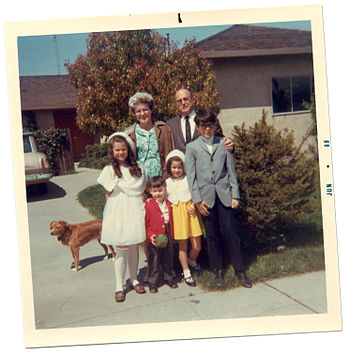When my “bonus son” visits each summer we spend a lot of time talking about everything from international politics to family traits. We tackle new experiences and drag out old family photos. Since he lives so far away, he’s intrigued by family traits and similarities that crop up without living in the same household — or even on the same continent. He’s both participant and observer, trying on ideas and traits before claiming them as his own.
His Dad grew up imprinted with good luck and perfect timing, reinforced by a mother who affirmed it: “You always land on your feet.” As a result, my partner seems to have spent his whole life expecting good outcomes and is rarely disappointed. His youngest son is intrigued by and attracted to this thought.
[Tweet “”He grew up imprinted with good luck & perfect timing…””]
“I’ll bet they thought I forgot….” said the message that came with the picture at the gate.
When Luis headed back to Berlin, he was asked to take this picture in front of the Brandenburg Gate. Despite the combined pressures of school and sports and social life he managed to get it done. I had forgotten that his aikido instructor asked for this picture… but when we Skyped this week he asked me to share it.
[Tweet “Despite the combined pressures of school, sports & social life he got it done.”]
“I know my friends Ryan and Maggie have their black belt tests and I wanted to share this for good luck.
Maybe they know the Brandenburg Gate has been an important symbol of victory for many years. It’s where we celebrate lots of things — most recently Germany’s reunification. It reminds me of aikido because it symbolizes both strength and of peace.
When I started aikido this past summer, everyone was very kind and helpful to me… but nobody more than Ryan and Maggie. They helped me understand a lot of things about various techniques but, even more important, some things about life. My Dad always says that everyone we meet is a teacher. This summer at the dojo made that very clear to me: there are “official teachers” but we get to learn from everyone. Ryan and Maggie went out of their way to show me the value of hard work, enthusiasm and fun while trying to be the very best I can be. Like the Gate, they represent both peace and strength.”
So, was he a procrastinating teen? Or does he, like his Dad, tend toward perfect timing?
I join him in wishing our friends the best of luck as they attempt this important milestone.
[Tweet “There are “official teachers” but we get to learn from everyone.”]






